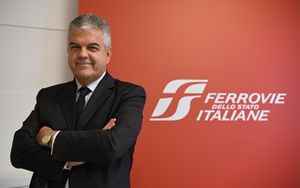(Finance) – Develop physical and digital infrastructures to encourage the growth of collective mobility. So as to help connect Italian municipalities, the country’s cultural heritage, and shorten distances by allowing everyone to travel in the most efficient and simple way possible. This is what emerged from the intervention of Luigi Ferrarismanaging director of the Italian FS Groupat the 39th Anci annual meeting underway in Bergamo, the two days of meetings that brought together institutions, businesses, government representatives and above all mayors and local administrators.
“Our country is represented by thousands of municipalities that are our history, our past, a heritage cultural enormous – said Ferraris – and that to be exploited cannot fail to have infrastructures that connect them physically but also digitally”. By its nature, FS is a reality strongly linked to the territory and the communities it crosses. net railway managed by fryfor example, reaches over 1,800 Italian localities, with 2,200 stations from the north to the south of Italy, the Anas road network reaches 3,500 municipalities.
“Our Ten-year industrial plan from 190 billion euros sets us the goal of increasing the availability of infrastructures – explained Ferraris – allowing us to increase the capacity of the transport by 20%, favoring the use of train for both passenger and freight transport. We also aim to redevelop the territories and spaces currently not used by our activities, with the aim of reaching 200 parking spaces near the stations so as to contribute to the intermodality between different means of transport”.
For Ferraris, however – we read on FS News – to contribute to the growth of collective transport it is also necessary to develop an “intelligent and integrated network at the service of sustainable mobility”. FS already has two initiatives underway to enhance connectivity on board and in trains stations. The first, short-term, will make it possible to have maximum 4G coverage on the network within twelve months High speed, especially covering galleries. The second medium-long term project is called Gigabit Rail and Road and, with 2 billion euros of investments planned, is aimed at extending and enhancing the optic fiber along the 17,000 km of railway lines.
“The goal is to replace and innovate the optical fiber that we already have along our lines – explained Ferraris – thus making it possible to have the availability of the signal on board all trains, including regional and intercity and in over 2000 stations, up to center of the country”. And that’s not all: almost 12,000 km of railway network, in fact, run parallel to, or at a distance of less than a kilometre, the roads of Anas. “These investments allow us on the one hand to develop and build digital platforms to promote mobility and collective transport – explained Ferraris – and on the other to create an enabling and available infrastructure that will benefit many small villages and rural areas less covered by the operators of telecommunications“. An example? “The farmers they will be able to remotely plan their activities, such as irrigation”.
